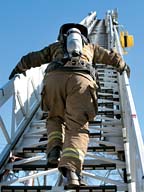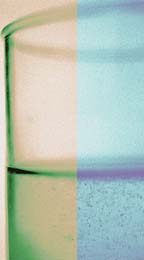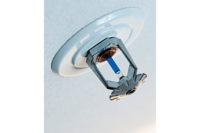Issue: 7/04
During the past decade, an ongoing debate has developed between the fire protection community and the local water authorities. While the debate continues, many areas of agreement and compromise have developed. The fire protection community has begun to understand the very strict local, state and federal regulations that all water authorities must comply with. The water authorities have long understood the life safety and property protection benefits of automatic fire sprinklers. Now, they have begun to understand the real cross-connection risks associated with each type of fire sprinkler systems and the impact automatic fire sprinkler systems can have in reducing the demand and infrastructure associated with providing fire protection water. In fairness, the fire protection community has also had to understand and accept the same real risks associated with each type of fire sprinkler system, in order to fully understand the water authority's concerns. Here is a brief summary of both of these concerns.
Water Authority Responsibilities
The water authority has the responsibility to provide safe and reliable drinking water to all customers. Because of this responsibility, all types of cross-connections must be addressed, including automatic fire sprinkler systems.Fire Protection Needs
All automatic fire sprinkler systems need an adequate and reliable supply of water. With its long track record and strict performance requirements, the municipal water distribution system is the most reliable and largest source of water supply for automatic sprinkler systems. In order to provide economical fire sprinkler systems, all advantages of the available water supply need to be utilized. Where this becomes a key issue for the fire protection community is in available system pressure. As the available pressure is reduced due to system friction loss or added friction loss from backflow prevention assemblies, the need for fire pumps becomes more prevalent and significantly increases the total cost of the system.
Fire Sprinkler Systems-Community Impact
Automatic fire sprinkler systems not only have an impact on community life safety and property protection, but they also have a significant impact on a community's water supply by reducing the amount of water used to control fires. For residential fire sprinklers systems, the required water demand to control a fire is reduced by approximately 88% (Scottsdale 15-Year Study). Because of this reduction in water usage, it allows a community to reduce the size of the water mains and the number of hydrants can also be reduced. Scottsdale, AZ, a sprinklered community for over 15 years, has had an infrastructure savings of $7 million dollars as a result of uniform application of automatic fire sprinkler systems. Additionally, the community benefits from the added life safety and property protection. In Scottsdale during the 15-year study, there were 49 fires in sprinklered homes with no fatalities, and during the same time, 13 people died in fires in non-sprinklered homes. During the 15 years, the average loss per fire without sprinklers was $45,019, whereas the average loss per fire with sprinklers was $2,166. Automatic fire sprinkler systems effectively reduced the average loss per fire by 95%. Research like the Scottsdale report has gone a long way toward documenting the total community impact that automatic fire sprinkler systems can have on the community from a fire protection, as well as a water authority, perspective.American Water Works Association Research Foundation
The American Water Works Association (AWWA) Research Foundation has published a study on the impact of fire flow on water distribution systems titled, "Impact of Fire Flow on Distribution System Water Quality, Design, and Operation." The conclusion states that:"Water-efficient fire suppression technologies exist that use less water than conventional standards. In particular, the universal application of automatic sprinkler systems provides the most proven method for reducing loss of life and property due to fire, while at the same time providing faster response to the fire and requiring significantly less water than conventional fire-fighting techniques. It is recommended that the universal application of automatic fire sprinklers be adopted by local jurisdictions."
As mentioned earlier, both the fire protection community and the water authorities are beginning to understand the impact and the benefits that each group brings to the table. The question now is where are we today? The following summaries should provide a much clearer picture of the requirements and recommendations, and hopefully, some detailed guidance for designing and specifying automatic fire sprinkler systems.

AWWA M-14 Recommendations
AWWA M-14 is the American Water Works Association's manual for the "Recommended Practice for Backflow Prevention and Cross-Connection Control." The current 2004 edition of M-14 is the third edition. The previous edition (1990) had six classes of cross-connections for fire sprinkler systems. The current edition has replaced them with a classification system that depends on the degree of hazard presented by the fire sprinkler system. The degree of hazard in general is either considered low hazard or high hazard. A low hazard cross-connection is a non-health hazard. It is a potential cross-connection that involves any substance that generally would not be a health hazard but would constitute a nuisance or be aesthetically objectionable if introduced in the potable water supply. A high hazard cross-connection is a health hazard. It is a potential cross-connection involving any substance that could, if introduced into the potable water supply, cause death or illness, spread disease, or has a high probability of causing such effects.Since a fire protection system design can vary, the level of backflow protection should be based on the type of cross-connection and the degree of hazard presented. Additionally, the local plumbing code could have further regulations affecting systems connected to private plumbing systems.
M-14 now has two general approaches for cross-connection control of automatic fire sprinkler systems. The first approach recommends a double check valve assembly (DCV) on all fire sprinkler systems, unless there is a risk of a high hazard cross-connection, in which case a reduced-pressure zone principal backflow prevention assembly (RPZ) is recommended. The second approach is to assess each type of fire suppression system individually. For this approach, M-14 provides general guidance on the various types of fire suppression systems.
